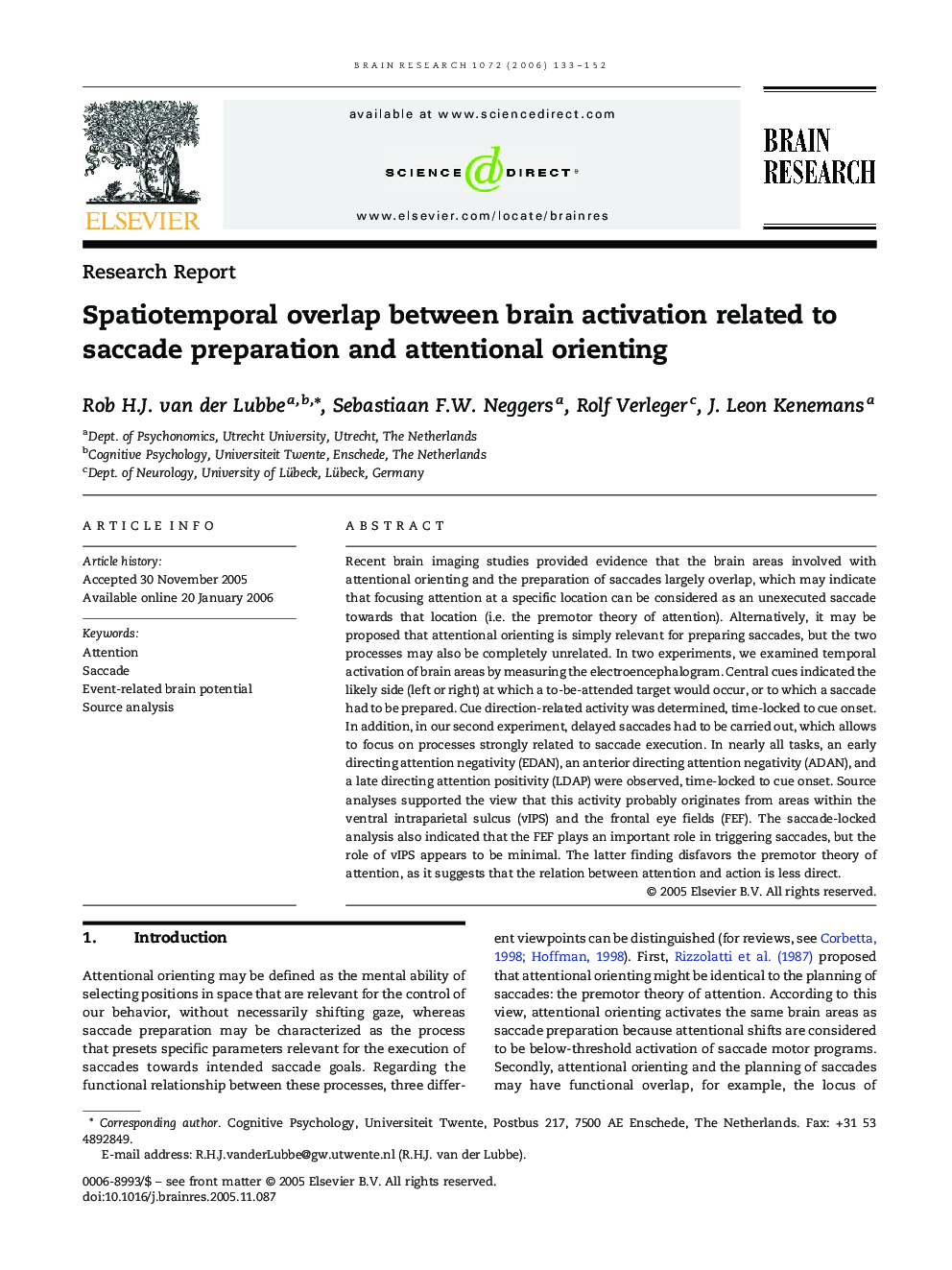| Article ID | Journal | Published Year | Pages | File Type |
|---|---|---|---|---|
| 4333434 | Brain Research | 2006 | 20 Pages |
Recent brain imaging studies provided evidence that the brain areas involved with attentional orienting and the preparation of saccades largely overlap, which may indicate that focusing attention at a specific location can be considered as an unexecuted saccade towards that location (i.e. the premotor theory of attention). Alternatively, it may be proposed that attentional orienting is simply relevant for preparing saccades, but the two processes may also be completely unrelated. In two experiments, we examined temporal activation of brain areas by measuring the electroencephalogram. Central cues indicated the likely side (left or right) at which a to-be-attended target would occur, or to which a saccade had to be prepared. Cue direction-related activity was determined, time-locked to cue onset. In addition, in our second experiment, delayed saccades had to be carried out, which allows to focus on processes strongly related to saccade execution. In nearly all tasks, an early directing attention negativity (EDAN), an anterior directing attention negativity (ADAN), and a late directing attention positivity (LDAP) were observed, time-locked to cue onset. Source analyses supported the view that this activity probably originates from areas within the ventral intraparietal sulcus (vIPS) and the frontal eye fields (FEF). The saccade-locked analysis also indicated that the FEF plays an important role in triggering saccades, but the role of vIPS appears to be minimal. The latter finding disfavors the premotor theory of attention, as it suggests that the relation between attention and action is less direct.
